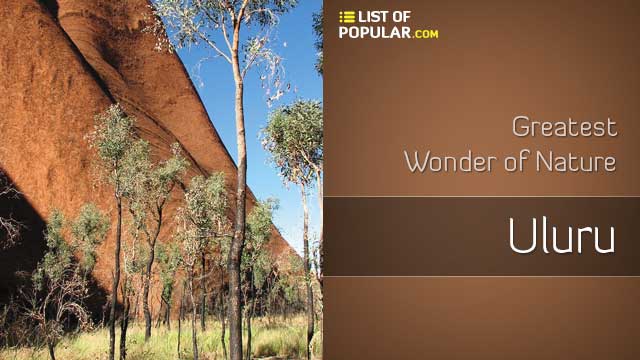Uluru National Park
In October 1872, explorer Ernest Giles became the first foreigner to see this rock but could not approach because it was blocked by Lake Amadeus and only called it "the remarkable pebble". In July 1873, surveyor William Gosse visited this rock and named it Ayers Rock, in honor of South Australia's Chief Secretary Sir Henry Ayers.
In 1993, a dual name policy was adopted so that on December 15, the name was Ayers Rock/Uluru and on November 6, 2002, the name was reversed to Uluru/Ayers Rock at the request of the Alice Springs Regional Tourism Association.
Uluru is one of Australia's most famous natural icons. The world-famous sand formation stands 348 m (1142 ft) high (863 m/2831 ft above sea level) with most of the mass below the ground, and the circumference size is 9.4 km (5.8 mi). Both Uluru and Kata Tjuta have great cultural significance for Aṉangu Traditional landowners, which lead to sightseeing tours informing local visitors about flora and fauna, Aboriginal bush food and dream stories of the region.
Uluru is important to appear to change the color differently as the light strikes at different times of day and year, with incredible sunsets especially when seeing the glows briefly red. Although rainfall is rare in this semiarid area, during the wet period the stone acquired a silver-gray, black color with streaks of algae formation in areas that function as channels for flowing water.
The word Tjuta, also called Mount Olga or Olgas, is one of the rock formations about 25 km (16 miles) from Uluru. Special viewing areas with road access and parking have been built by tourists to provide the best views of both sites at dawn and dusk.
Uluru is inselberg, literally "mountain island", the remnant left over after a slow erosion of the original mountains. Uluru is also often referred to as monolith, although this is a dual term for several meanings, and thus the word is generally avoided by geologists. The remarkable features of Uluru are the similarity and lack of jointing and separation of bedding on the surface, which leads to a lack of construction of slope and soil scree. This characteristic is led to life, while around the rock it is eroded. For the purpose of geological mapping and explaining the history of the region, geologists refer to the making of rock strata over Uluru as Mutitjulu Arkose, and are one of the many formations that fill the Amadeus Basin.

